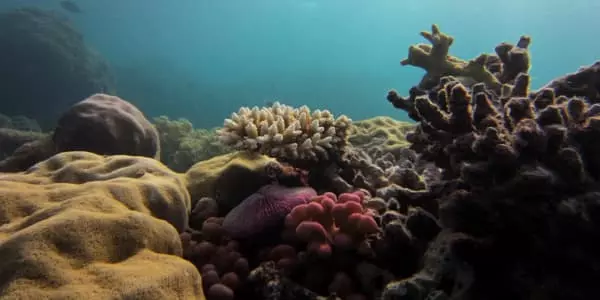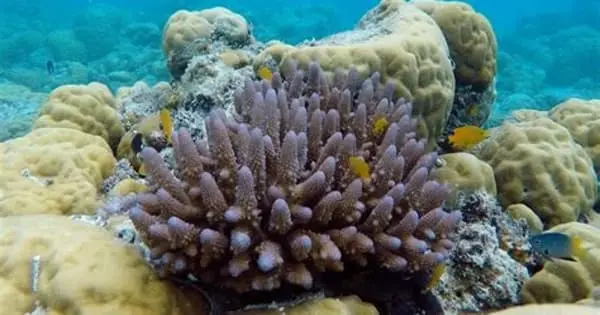As the world’s coral reefs face increasing threats, a team of researchers has developed a genetic analysis tool that can identify many different types of coral on a reef using only a sample of seawater.
Okinawa Institute of Science and Technology Graduate University (OIST), the University of Tokyo, and the Okinawa Prefecture Environment Science Center have developed a tool that can determine the diversity of hard corals on a reef by analyzing DNA in a seawater sample. This powerful new tool, which was reported in Frontiers in Marine Science, paves the way for more accurate and accessible coral reef monitoring, which is a step forward for coral reef conservation and restoration around the world.
“Coral reefs are extremely important,” said Dr. Koki Nishitsuji, a staff scientist in OIST’s Marine Genomics Unit. “Not only are they incredibly diverse, containing roughly one-quarter of all marine life, but they also protect coastlines from storms and erosion, as well as providing food and income to millions of people around the world. However, as a result of global warming, corals are dying and reefs are disappearing. We want to restore the corals around Okinawa and further afield. To do so, we must first understand the diversity of coral. This new tool is a very accurate and simple method of determining such diversity.”
Coral reefs are extremely important. Not only are they incredibly diverse, containing roughly one-quarter of all marine life, but they also protect coastlines from storms and erosion, as well as providing food and income to millions of people around the world.
Dr. Koki Nishitsuji
Traditionally, researchers would dive at a site and record the various types of coral they observed, returning on a regular basis to document changes. This was not only time-consuming, but it also necessitated specialized knowledge, as different coral groups can appear very similar, masking their underlying phylogenetical diversity. On the other hand, two members of the same species can appear very different, with varying colors and sizes, adding to the confusion.
The researchers eliminated the need for direct observation of the coral in this study by developing a powerful identification tool in the form of a primer – a short DNA sequence. This primer contains a sequence that is nearly identical in 36 different hard, or scleractinian, coral genera, allowing any coral within these genera to be identified using only their DNA.

To put this primer to the test, samples were collected from three different reef areas in Okinawa, Japan. Although seawater samples may appear to be devoid of useful material at first glance, they actually contain a soup of genetic information that can reveal what is present in the surrounding ocean via environmental DNA (eDNA) analyses – the DNA of an organism found in its local environment. This includes the DNA encapsulated in the mucus that coral excretes into the seawater.
The researchers extracted all of the scleractinian coral eDNA from the samples using their primer. They then made millions of copies of each extracted piece of DNA, allowing even the smallest DNA fragment to be amplified and sequenced, and analyzed.
The analysis revealed that various coral genera could be identified. Furthermore, the researchers were able to identify each reef using only eDNA. Two of these areas were only 730m apart, indicating that eDNA content and coral community composition can vary within a kilometer.
When the researchers compared their results to those obtained using the traditional method of visual identification, they discovered very little difference, implying that both were as accurate as the other, but the eDNA method was faster and required less specialized knowledge.
“This eDNA method has been used in a few previous coral studies, but those are less specific to corals or restricted to specific coral species,” Dr. Nishitsuji explained. “The primer we developed, which could identify 26 different genera with the samples we used and has the potential to identify more, is an important part of this study. We will continue to improve our tool to allow for species-level identification so that we can determine exactly what is present on each reef and what needs to be done to preserve this diversity.”





